“Another Huguenot settlement area in S.C.’s upcountry……”
City Directories and History: “Badwell Plantation, located on Highway SC- 28 south of the eastern terminus of SC-81, was 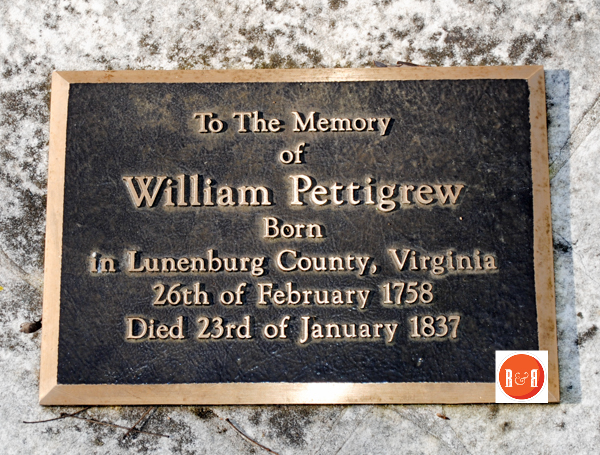 the home of the Rev. Jean Louis Gibert. He is buried in a small family cemetery near the house site. After his death, the property eventually passed to his grandson, James Louis Petigru, the son of his daughter Louise and William Pettigrew. (Petigru preferred to use the French spelling of his
the home of the Rev. Jean Louis Gibert. He is buried in a small family cemetery near the house site. After his death, the property eventually passed to his grandson, James Louis Petigru, the son of his daughter Louise and William Pettigrew. (Petigru preferred to use the French spelling of his
father’s family name.) He improved the plantation at every opportunity and planted a handsome White Oak Avenue from the highway to the house. McCormick, named for Cyrus McCormick, was chartered on December 22, 1882, and rechartered on May 7, 1913. The origin of the name Badwell is doubtful; however, Petigru went to much trouble and expense to drill a dependable water well on his property and this well may have been the source of the name. The house at Badwell was destroyed by fire in the late 1920’s. Only the stone spring-house remains.”
Just a short distance off the McCormick-Abbeville highway, about ten miles from McCormick, stretches a handsome and illustrious grove of white oak trees. The Avenue, as it is still called, was begun in 1843 by one of South Carolina’s most distinguished private citizens, James Louis Petigru, who for twenty years directed the planting of these trees on either side of a mile-long roadway leading up to Badwell, his family residence. Sunday, October 13, 1954, and in detail records the area as it was at that time.) In order to reach this historic old avenue, one must leave the main highway (Highway 28) and travel along a typical winding country road which passes through a level stretch of uncultivated land, locally called a “pareer.” Along this road today there are few signs of farming activity except for several small cultivated patches of corn and cane and an old-time cane mill, in which syrup is made by hitching a mule to a long pole which he pulls in a relentless circle, grinding the cane into syrup juice. After following this inauspicious crossroad for barely a mile, the traveler comes suddenly upon the handsome avenue, thirty feet wide and stretching ahead perfectly straight. On either side of the roadway venerable oaks still stand as Petigru planted them, making an imposing approach, fit to serve as the entrance to a fine country home. Today Petigru’s Avenue leads up to Badwell’s deserted home site: the house is gone, destroyed by fire some years ago. There are some remains of the foundations, showing that the structure occupied a level piece of ground on the crest of a little hill. The grounds, though now grown up in weeds, tall grass, and stunted trees, still show that the yard was once attractively terraced, well kept, and beautified by many flowers and plants. Today only one structure remains on the Badwell property. This is the solid granite house built around a spring fountain which lies in a little valley at the bottom of the hill, a short distance from where the dwelling stood. Petigru had this spring house constructed with pride and loving care in 1851, and over its doorway may still be read his name and the year 1851.
(Information from: Names in South Carolina by C.H. Neuffer, Published by the S.C. Dept. of English, USC) (This article about the home of James Louis Petigru was first published in the State Magazine – October 13, 1954, and in detail records the area as it was at that time.)
Stay Connected
Explore history, houses, and stories across S.C. Your membership provides you with updates on regional topics, information on historic research, preservation, and monthly feature articles. But remember R&R wants to hear from you and assist in preserving your own family genealogy and memorabilia.
Visit the Southern Queries – Forum to receive assistance in answering questions, discuss genealogy, and enjoy exploring preservation topics with other members. Also listed are several history and genealogical researchers for hire.
User comments welcome — post at the bottom of this page.

R&R HISTORY LINK: JAMES L. PETIGRU FREEDOMS CHAMPION by L.G. Tyler
Please enjoy this structure and all those listed in Roots and Recall. But remember each is private property. So view them from a distance or from a public area such as the sidewalk or public road.
Do you have information to share and preserve? Family, school, church, or other older photos and stories are welcome. Send them digitally through the “Share Your Story” link, so they too might be posted on Roots and Recall.
Thanks!
ADDITIONAL DATA:
James Louis Petigru (1789-1863), the man who loved and revered this spot of ground, was the most eminent lawyer of his day in South Carolina. He was a man of the highest moral courage; he was known as “The Union Man of South Carolina” during the turbulent days when the citizenry predominantly favored Nullification and Secession. Yet in the midst of the tragic struggle, he remained in Charleston until his death in 1863, maintaining to the last the love and respect of his fellow citizens who embraced opposite political sentiments.
The late John P. Thomas, Jr., in his address before a joint session of the South Carolina and Georgia Bar Associations on May 30, 1919, made this appraisal of Petigru: “Throughout his long and honored career both at the bar and in public life, Petigru had a conception of the theory of our government far in advance of a large majority of the people of his state and his section of the country. While he was loyal to his state; yet, through good report and evil report, he remained from first to last a steadfast and uncompromising friend of the American Union, ‘That tower of strength which stood four square to all the winds that blew.’ Time has vindicated the sincerity and wisdom of his political opinions.” Ironically enough the supreme champion of the opposing political beliefs, John C. Calhoun, was also nurtured in the same section of Abbeville District as was Petigru.
It was here at Dr. Moses Waddell’s Classical Academy, located a few miles from Badwell, that the leading exponent of States Rights and the staunchest champion of the Union received their college preparatory education. Petigru’s family place, Badwell, had originally been the home of his maternal grandfather, Jean Louis Gibert, the beloved French pastor who was the head of the last Huguenot Colony to come to South Carolina. This band of devout Protestants had come to South Carolina in 1764 and laid out a settlement on Little River in Hillsborough Township, naming their town New Bordeaux. James Louis Petigru, son of William Pettigrew (his spelling) and Louise Guy Gibert, was born May 10, 1789, in the Flat Woods section of Abbeville County, but when he was eleven years old his parents moved to Badwell, his mother’s family homestead, then occupied by Dr. Joseph Gibert, her bachelor brother. [The origin of the name Badwell has not been documented. Some suggests it is from a family place in Scotland; others that it refers to the difficulties and expense of James Louis Petigru’s finally getting good water for his home, though the place was named Badwell long before his arrival.] Very early in his life Petigru developed a deeply rooted attachment to Badwell. It was sacred soil to him as the home of his sainted grandfather, Jean Louis Gibert. His youth and young manhood were spent here until the year 1806 when he entered South Carolina College. After graduating from this institution with first honors, he returned to Badwell to assist his mother with the management of the farm; but soon thereafter she wisely advised him to go elsewhere to seek a suitable career. He decided upon the Beaufort District, where he first taught school and later practiced law. His first thought after earning sufficient money was to improve the home at Badwell for his mother.
In 1819 his law practice had increased greatly; he was now a young man of rising reputation; and in order to advance in his profession, he moved to Charleston. He was at first associated in practice with James Hamilton, Jr., until the latter was elected to Congress in 1822. After Hamilton’s departure, Petigru continued his practice in his famous law office in St. Michael’s Alley, soon becoming the acknowledged leader in the Charleston Bar, one of the most distinguished in America. Charleston soon recognized him as a cultivated gentleman, possessed of a noble character and superior talents. And even though in the ensuing years from 1832 to 1861, he opposed the political sentiments of the most prominent Charleston lawyers on Nullification and Secession, he still retained their highest regard and respect. During these trying days he continued to have the deepest affection for his old home in Abbeville county, looking forward eagerly to his summer visits there, where he found pleasant relaxation and the love of his kindred. Meanwhile, his mother had died in 1826, and since 1836 his widowed sister, Mrs. Jane Petigru North, with her children had lived at Badwell, where Mrs. North managed the farm. It was during this period that Petigru began putting into effect his cherished ambition of beautifying and ornamenting his old home. The avenue and the spring house occupies first place in his affections. We find that these were a passion to him, as noted in his letters to his sister, Mrs. North. . .“The fountain and the avenue I will never resign. I beg you to make no arrangements that do not look to them as the great works of the place”; and later “That the fountain is in operation and does not disappoint our expectations is something to console one for many disappointments. . .next month it will be time to think of the avenue, and have each spot occupied by its own tree. The Avenue, my only chance of going down to posterity, will hardly be finished in my lifetime.”
The planting of the avenue of oaks became a consuming interest of Petigru’s life. He sent landscape gardeners from Charleston to direct the work and sent many letters to his sister, Mrs. North, enlisting her aid. Often he sent words of encouragement to the Negroes who were working on the project, saying that if the trees did well, “they should have praise and pudding too.”
These letters attest to his high regard for Badwell. In this correspondence with his sister, he often remarked that the failure of the crop was not as vital to him as the loss of any of his trees, “But, my dear Jane, above all things, mind my nursery of oaks. No matter if you lose the crop—let us secure the fruits of the acorn.”
This strong attachment to his beloved oaks is noted by W.J. Grayson in his excellent biographical sketch of Petigru.. .He gave them the names of his distinguished friends. They were called by such
illustrious names as Legare, Allston, Elliott, and Huger. The historic grove today might well be called a neglected Westminster Abbey of South Carolina. . . .
[Editor’s note, 1982: Though White Oak Avenue at Badwell has been scarcely noticed by succeeding generations, James Louise Petigru has been eulogized through the years as the man whose love for the American Union transcended all other political sentiments and as one who considered the American Constitution the grandest document ever conceived by man. Although the first two buildings housing the Law School on the University of South Carolina Columbia campus were named for him, the present imposing structure (comparable to Sinclair Lewis’ many Main Streets) is merely titled University Law Center.]
User comments always welcome - please post at the bottom of this page.
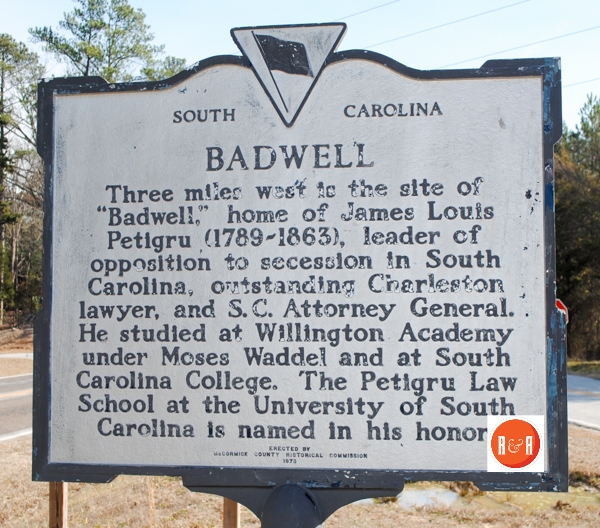
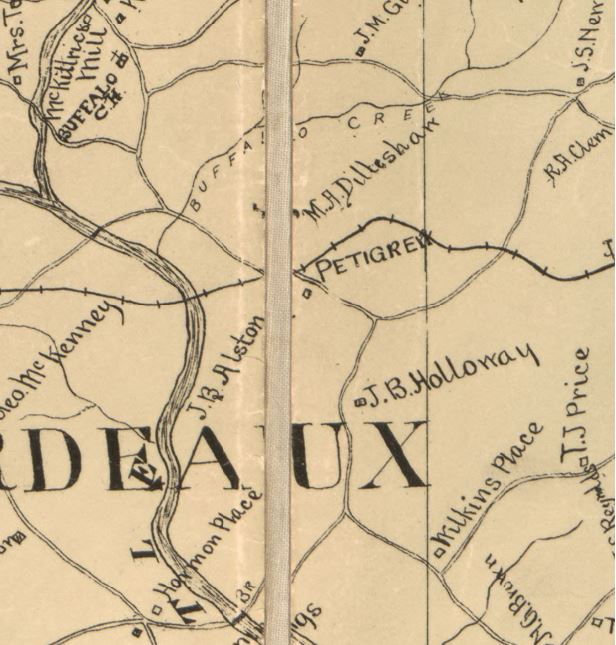
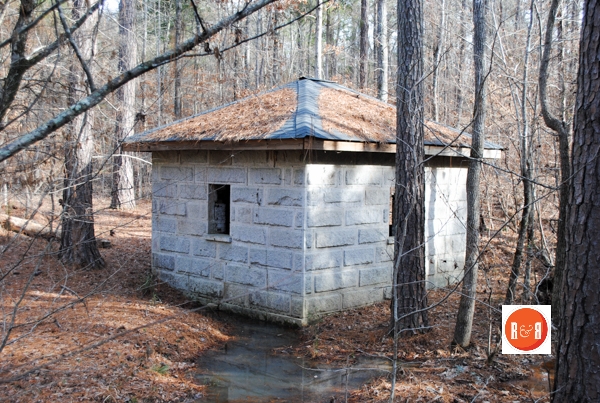
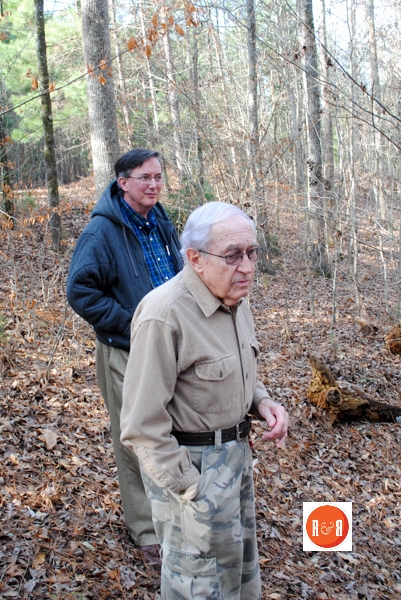




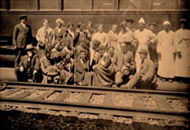
Share Your Comments & Feedback: